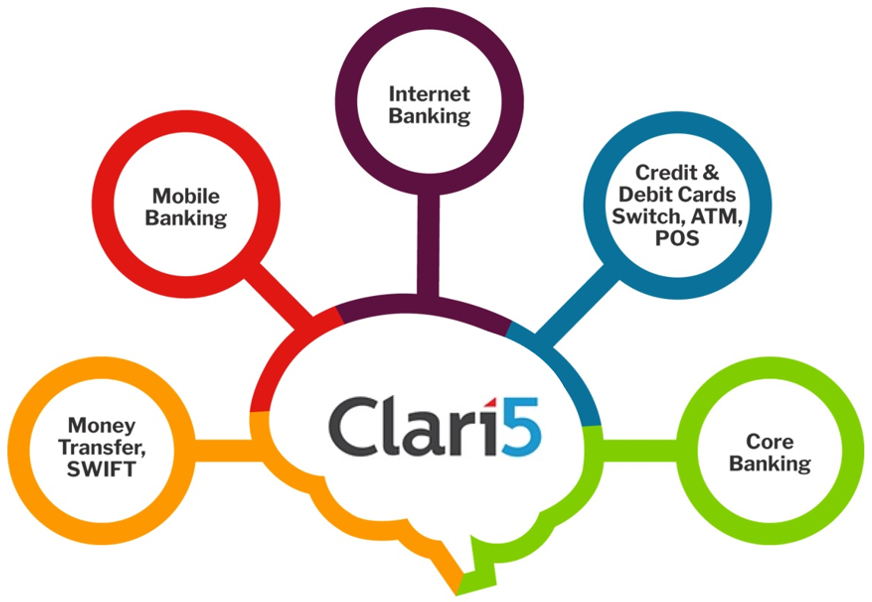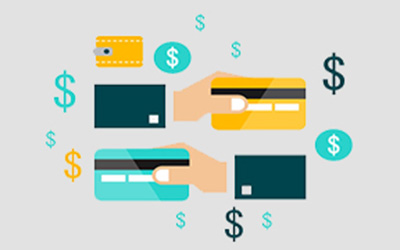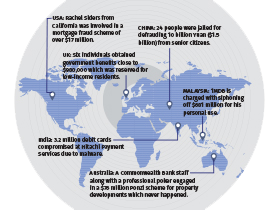How To Monetize your Anti-Fraud Solution to Make Money for you
 In Chinese philosophy, yin and yang (also yin-yang or yin yang, ‘dark-bright’) explains how seemingly opposite or contrary forces may actually be complementary, interconnected, and interdependent in the natural world.
In Chinese philosophy, yin and yang (also yin-yang or yin yang, ‘dark-bright’) explains how seemingly opposite or contrary forces may actually be complementary, interconnected, and interdependent in the natural world.
This intriguing idea actually applies perfectly in the context of banking, if we were to see the yin as saving money (from losses) and the yang as making money (from sales).
The fundamental principle is that the very same investment in data analytics and real-time decisioning for detecting/preventing fraud can be monetized for earning more revenues.
Imagine an intelligent system that understands customers’ behavioral patterns to detect and prevent fraud is also creating precise personas for marketing teams to target.
This is because the same extreme real-time, context-aware logic/approach used to combat cross-channel fraud can also help enable intelligent, hyper-precise targeted and contextual customer engagements.
At the heart of the hypothesis lies the fact that banks have the ‘soul’ of the customer.
 Banking is the only industry where the entire life of the customer flows through it. A bank knows how much its customers earn, where they live, where they travel to, how much they spend, who’s part of the family, whether they own their home, even how much fuel they put in the car.
Banking is the only industry where the entire life of the customer flows through it. A bank knows how much its customers earn, where they live, where they travel to, how much they spend, who’s part of the family, whether they own their home, even how much fuel they put in the car.
No other industry (not even telco or retail) has this very special privilege of having a 360 degree view of a customer’s life. Only banks have the advantage and ability to actually convert this ‘resident intel’ to their benefit.
A real-time, enterprise-wide, cross-channel fraud management solution requires that every banking transaction is available in memory in real-time.
But since only a relatively small percentage of transactions are fraudulent and since the data is available in the system memory, the bank can run positive scenarios in real-time after having assigned fraud risk to certain transactions during the negative-scenario test-run.
 The solution can use the same data captured per transaction and analyze the spending and behavior patterns to throw up potential cross-sell and up-sell scenarios in absolute real-time.
The solution can use the same data captured per transaction and analyze the spending and behavior patterns to throw up potential cross-sell and up-sell scenarios in absolute real-time.
Precise data analytics on behavior patterns helps create intelligent and efficiently targeted customer interactions and campaigns to grow the topline.
So while the solution helps the bank’s larger enterprise fraud management initiatives with …
- A unified case management system for fraud/AML investigation with 360-degree view of behavior across products and channels in one single place.
- Extreme real-time, context-aware, cross-channel fraud detection and prevention.
- Monitoring financial and non-financial transactions of customers, accounts, users and employees across branch and channel transactions in real-time to detect suspicious fraud and respond with the right decision in real-time and generate alerts for investigation.
- Monitoring Salary Accounts’ to identify increase in Salary Credits or non-usage of Salary Accounts.
… it can also be used for –
- Tracking customers’ POS/E-com channels transactions for generating extreme real-time, as-of-the-moment cross-sell and up-sell alerts.
- Identifying customers who usually travel internationally and offering them custom products in real-time.
- Creating customer delight in branch and digital transactions.
So altogether the bank benefits from a –
- Smart, intelligent, extreme real-time solution that manages fraud detection/prevention as well as enables customer revenue maximization.
- Non-invasive, bolt-on solution that integrates seamlessly with source systems and reduces TCO.
- Lowered cost of compliance of fraud and AML regulatory requirements.
- Single, unified platform that helps protects the bottom-line and grows topline.
 While there may not be many solutions that have the ability to see topline and bottom-line as 2 sides of the same coin, CustomerXPs’ Clari5 seems to one. Its unified fraud management platform leverages the same context-aware, real-time decisioning to enable real-time customer cross/upsell.
While there may not be many solutions that have the ability to see topline and bottom-line as 2 sides of the same coin, CustomerXPs’ Clari5 seems to one. Its unified fraud management platform leverages the same context-aware, real-time decisioning to enable real-time customer cross/upsell.
Clari5 handles exceptionally large data volumes across multiple channels and source systems in real-time, and processes transactional as well as non-transactional events in real-time and applies over 150 rules to generate alerts in real-time that can be leveraged for both fraud management as well as revenue enhancement.
Banks get to use the same real-time insights that helps combat fraud to also generate profits because the approach that uses the same fundamental logic to protect/save money (curb fraud losses) is also being used to make money (upsell / cross sell).
If banks can view their topline and bottom-line as the yin and yang of their operations, then a single solution that helps achieve both can very well be the proverbial one stone designed to kill two birds.





 When it comes to EMV standard, although the card data will be the same for every transaction, there will also be other pieces of data that gets re-organised for every transaction. This renders the data stolen at the POS useless for further use.
When it comes to EMV standard, although the card data will be the same for every transaction, there will also be other pieces of data that gets re-organised for every transaction. This renders the data stolen at the POS useless for further use. Using EMV technology for cards has seen a reduction in skimming-type attacks, but the crime rate has increased in other ways of stealing money. Research firm Aite Group reports that losses from counterfeit, lost, and stolen cards in Canada dropped from $245 million in 2008 to $112 million in 2013.
Using EMV technology for cards has seen a reduction in skimming-type attacks, but the crime rate has increased in other ways of stealing money. Research firm Aite Group reports that losses from counterfeit, lost, and stolen cards in Canada dropped from $245 million in 2008 to $112 million in 2013.



 Financial Fraud: Greatest Hits of 2016
Financial Fraud: Greatest Hits of 2016 Digital Finance: What’s Next?
Digital Finance: What’s Next?
 In Chinese philosophy, yin and yang (also yin-yang or yin yang, ‘dark-bright’) explains how seemingly opposite or contrary forces may actually be complementary, interconnected, and interdependent in the natural world.
In Chinese philosophy, yin and yang (also yin-yang or yin yang, ‘dark-bright’) explains how seemingly opposite or contrary forces may actually be complementary, interconnected, and interdependent in the natural world.
 The solution can use the same data captured per transaction and analyze the spending and behavior patterns to throw up potential cross-sell and up-sell scenarios in absolute real-time.
The solution can use the same data captured per transaction and analyze the spending and behavior patterns to throw up potential cross-sell and up-sell scenarios in absolute real-time. While there may not be many solutions that have the ability to see topline and bottom-line as 2 sides of the same coin, CustomerXPs’ Clari5 seems to one. Its unified fraud management platform leverages the same context-aware, real-time decisioning to enable real-time customer cross/upsell.
While there may not be many solutions that have the ability to see topline and bottom-line as 2 sides of the same coin, CustomerXPs’ Clari5 seems to one. Its unified fraud management platform leverages the same context-aware, real-time decisioning to enable real-time customer cross/upsell.